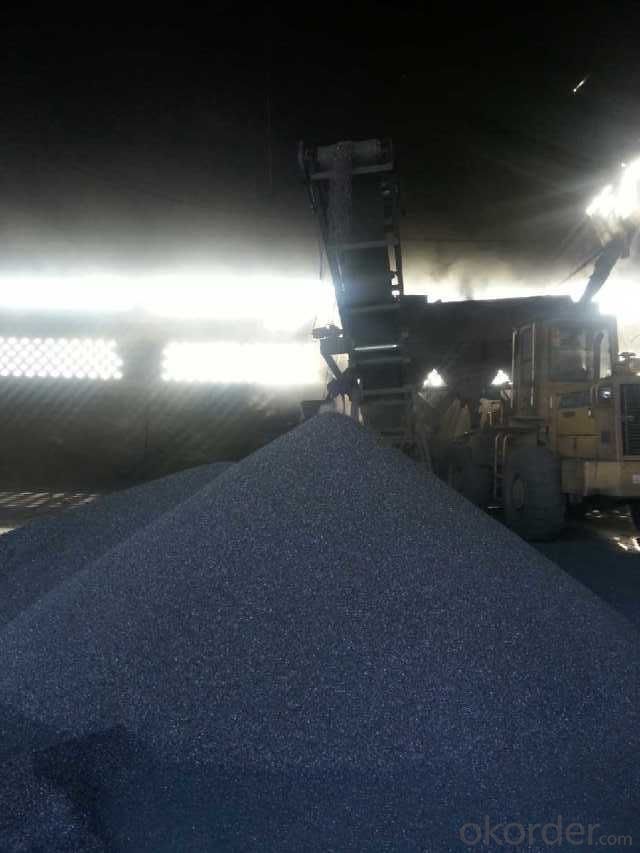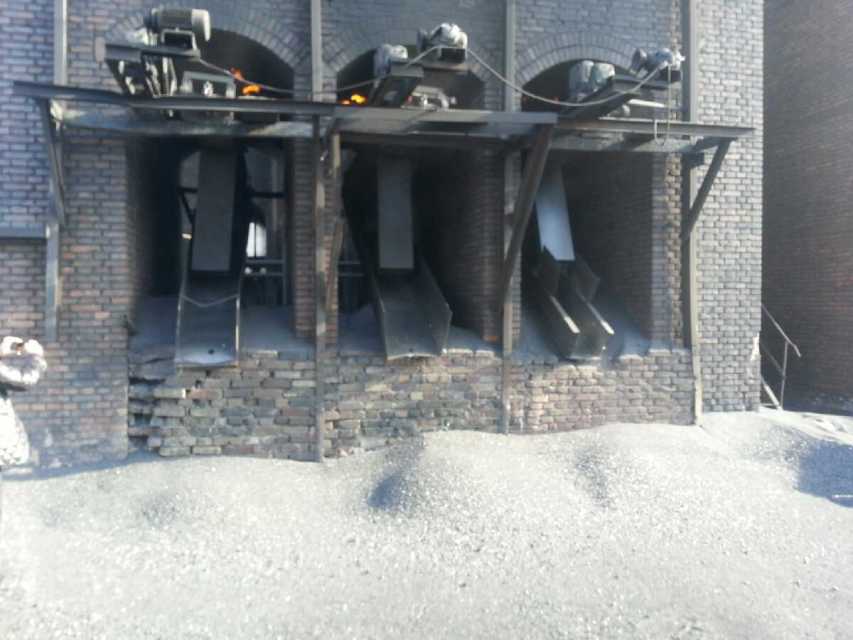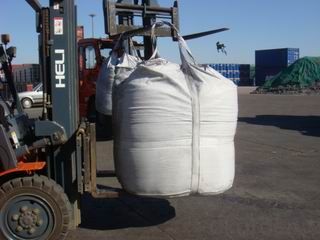FC 90%-95% Carbon additive
- Loading Port:
- China Main Port
- Payment Terms:
- TT OR LC
- Min Order Qty:
- -
- Supply Capability:
- -
OKorder Service Pledge
OKorder Financial Service
You Might Also Like
Specifications
Calcined Anthracite
Fixed carbon: 90%-95%
S: 0.5% max
Size: 0-3. 3-5.3-15 or as request
Calcined Anthracite is produced using the best Anthracite-Taixi Anthracite with low S and P, It is widely used in steel making and casting, Chemical and some other fields.
General Specification of Calcined Anthracite:
PARAMETER UNIT GUARANTEE VALUE | |||||
F.C.% | 95MIN | 94MIN | 93MIN | 92MIN | 90MIN |
ASH % | 4MAX | 5MAX | 6MAX | 7MAX | 8MAX |
V.M.% | 1 MAX | 1MAX | 1.5MAX | 1.5MAX | 1.5MAX |
SULFUR % | 0.5MAX | 0.5MAX | 0.5MAX | 0.5MAX | 0.5MAX |
MOISTURE % | 0.5MAX | 0.5MAX | 0.5MAX | 0.5MAX | 0.5MAX |
Size can be adjusted based on buyer's request.
Pictures of Calcined Anthracite:




We can supply below furnace charges, please feel free to contact us if you areinterested in any of any of them:
Coke (Metallurgical, foundry, gas)
Calcined Anthracite with fixed carbon from 90% to 95%
- Q:What is carbon dating?
- Carbon dating is a scientific method used to determine the age of organic artifacts, such as ancient human remains or archaeological objects. It relies on the fact that all living organisms contain a small amount of radioactive carbon-14, a rare isotope of carbon. When an organism dies, it no longer takes in carbon-14, and the amount of this isotope slowly decreases over time through radioactive decay. By measuring the ratio of carbon-14 to carbon-12 in a sample, scientists can estimate how long it has been since the organism died. This technique provides accurate age estimates up to around 50,000 years, making it particularly valuable for dating artifacts from prehistoric times. Carbon dating has revolutionized the field of archaeology and has been instrumental in understanding the timelines of human history and the evolution of various civilizations.
- Q:Iron and steel are different in terms of carbon content
- That is, high manganese content, less nickel or nickel free stainless steel. This stainless steel market costs more than 1000 yuan per ton of stainless steel with nickel. Some dealers is the use of good people are not on the stainless steel magnet suction misunderstanding, to deceive consumers, so the price as high with expensive stainless steel.There are more than 100 kinds of stainless steel, and the characteristics and functions are different. General decoration, landscape, sculpture using austenitic stainless steel. Because of the low thermal conductivity of austenitic stainless steel, using it as a kettle, wok, rice cooker is not appropriate, will use a lot of energy, but also to extend the boiling water cooking time. Using ferritic stainless steel as a wok and rice cooker, not only has excellent corrosion resistance, but also its thermal conductivity is nearly half higher than that of austenitic stainless steel.
- Q:What are the consequences of increased carbon emissions on social inequality?
- Increased carbon emissions have profound consequences on social inequality. The primary consequence is the exacerbation of existing inequalities, particularly in disadvantaged communities. Firstly, the effects of climate change, driven by carbon emissions, disproportionately impact marginalized communities, including low-income neighborhoods and developing countries. These communities often lack the resources and infrastructure necessary to withstand extreme weather events, such as hurricanes or flooding, resulting in greater vulnerability and loss of livelihoods. Secondly, the economic consequences of carbon emissions, such as rising energy costs and reduced agricultural productivity, further widen the gap between the rich and the poor. Affluent individuals may be able to adapt to these changes, while those with limited financial resources struggle to cope, leading to increased poverty and socio-economic disparities. Moreover, increased carbon emissions contribute to health disparities. Polluted air, resulting from carbon emissions, disproportionately affects low-income neighborhoods, where industrial plants and highways are often located. This leads to higher rates of respiratory diseases and other health issues among marginalized communities, exacerbating existing health inequalities. Furthermore, the impacts of climate change, driven by carbon emissions, can lead to forced displacement and migration. As environmental conditions deteriorate, communities may be forced to relocate, often resulting in social disruption and increased competition for resources. This can further marginalize vulnerable populations and create conflicts over land and access to resources. Lastly, the consequences of carbon emissions on social inequality extend globally. Developing countries, which contribute less to carbon emissions but bear a disproportionate burden of the impacts, face significant challenges in addressing climate change. Limited resources and technological capabilities hinder their ability to adapt and mitigate the effects, perpetuating global inequalities. In conclusion, increased carbon emissions have grave consequences on social inequality. They worsen existing disparities, particularly affecting marginalized communities, through the disproportionate impacts of climate change, economic hardships, health disparities, forced displacement, and global inequalities. Addressing carbon emissions and climate change is crucial not only for environmental sustainability but also for promoting social justice and reducing social inequality.
- Q:How is carbon used in the production of fuels?
- Carbon is used in the production of fuels through a process called carbonization, where organic materials such as coal, oil, and natural gas are heated in the absence of air to produce carbon-rich substances like coke and charcoal. These carbon-rich substances can then be further processed to create various types of fuels, including gasoline, diesel, and natural gas, which are essential for powering vehicles, generating electricity, and heating homes and industries.
- Q:Which is better, 13 and 14 carbon breath tests?
- According to your case, carbon 14 is cheaper than 13, and the accuracy is the same
- Q:How is carbon used in the production of ink?
- Carbon is used in the production of ink as a pigment, providing the black color commonly seen in inks.
- Q:What are the different types of carbon-based polymers?
- Carbon-based polymers come in various types, each possessing unique properties and applications. Some commonly encountered variants include: 1. Polyethylene (PE): Esteemed for its exceptional strength and chemical resistance, PE is extensively utilized in packaging materials, plastic bottles, and pipes. 2. Polypropylene (PP): PP is akin to PE, but it boasts a higher melting point and superior heat resistance. This makes it a popular choice for automotive parts, textiles, and food packaging. 3. Polystyrene (PS): PS is a lightweight and rigid polymer frequently employed in packaging materials, disposable utensils, and insulation. 4. Polyvinyl chloride (PVC): PVC is a versatile polymer that can be either rigid or flexible based on the additives employed. It finds common application in pipes, electrical insulation, and flooring. 5. Polyethylene terephthalate (PET): PET is a robust and lightweight polymer commonly found in beverage bottles, food containers, and synthetic fibers. 6. Polyurethane (PU): PU is a flexible and durable polymer utilized in foams, coatings, adhesives, and textiles. 7. Polycarbonate (PC): PC is a robust and transparent polymer regularly utilized in eyeglass lenses, safety goggles, and electronic components. 8. Phenolic resins: Renowned for their exceptional heat resistance, these polymers are commonly employed in coatings, adhesives, and electrical components. These examples represent only a fraction of the diverse range of carbon-based polymers available. Each type possesses specific properties and applications, rendering them suitable for a wide array of industries and products.
- Q:What can light hydrocarbon carbon five be packed with?
- Light hydrocarbon carbon fiveLight hydrocarbon carbon five is a light yellow or colorless transparent flammable liquid with a density of 0.60-0.68 and a boiling point of 36.1 degrees. The calorific value of liquid light hydrocarbons is 10800kcal/kg. (the current price in Chengdu is 2000 yuan / ton, and the monthly supply is about 1000 tons.).
- Q:How do you make your own carbon fiber bar?Know. ID is how to make? Don't copy anything that has nothing to do with it
- 3. carbon fiber product form and manufacturing process carbon fiber has four kinds of products: fiber, fabric, prepreg, and chopped fiber. Cloth refers to fabric made from carbon fibers. Prepreg is a product in which carbon fibers are aligned in one direction and impregnated with carbon fibers or fabrics to form sheets. A staple fiber is a short fiber. These products, together with resins, will form carbon fiber reinforced plastics (CFRP) at different ratios. The resin is attached to the fiber and can be made into a pressure vessel and roll, which is wound around a core and then plasticized or hardened. This method is called "winding forming method"". Put the cloth into a model, and then soak it with resin. It can also be the body part of the production card. This is the "method of resin transfer molding (RTM)". The manufacture of aircraft elements is made by heating, pressing and plasticizing preforms in a autoclave. A strand of prepreg is wrapped around a core and heated and plasticized. This is known as the sheet winding method, which can be used to make a golf club, a fishing rod. The short silk is mixed with resin to form a mixture, which can be used to produce mountain machine components and other products after processing. In the past, prepreg was the most widely used form of carbon fiber, fabricated by sheet winding in a reactor. Recently, however, with the development of new industrial applications, filament winding, blending and other methods of prefabrication have been developed more widely. The use of molding such as RTM has enabled manufacturers to make larger products more efficiently. The combination of carbon fiber with the most suitable resin and prefabrication process makes the application of carbon fiber more attractive.
- Q:What are the effects of carbon emissions on animal populations?
- Animal populations are profoundly affected by carbon emissions, which result in the disruption of ecosystems and the loss of habitats. The rise in carbon dioxide levels in the atmosphere leads to an increase in the Earth's temperature, causing climate change. This change in climate alters the availability of resources like food and water, making survival and reproduction more challenging for animals. Moreover, carbon emissions contribute to the acidification of the ocean. Seawater absorbs carbon dioxide, creating carbonic acid and lowering the ocean's pH. This acidification negatively impacts marine life, especially species that rely on calcium carbonate to build shells or skeletons, such as corals and shellfish. As their habitats become more corrosive, these animals struggle to survive and reproduce, resulting in significant population declines. Additionally, carbon emissions are closely associated with air pollution, which directly and indirectly affects animal populations. High levels of air pollution, particularly nitrogen dioxide and particulate matter, can cause respiratory problems and other health issues in animals. This reduces their fitness and increases mortality rates, ultimately influencing the overall population size. Lastly, carbon emissions contribute to deforestation and the destruction of habitats. Human activities like agriculture and urbanization clear more land, displacing animal populations and forcing them to adapt to fragmented landscapes. This fragmentation limits their movement, access to resources, and increases their vulnerability to predation and other threats. In conclusion, carbon emissions have extensive effects on animal populations, including habitat loss, climate change, ocean acidification, air pollution, and deforestation. These impacts disrupt ecosystems and jeopardize the survival of numerous animal species. It is crucial to address carbon emissions and reduce our carbon footprint to mitigate these detrimental effects and safeguard the Earth's biodiversity.
1. Manufacturer Overview |
|
|---|---|
| Location | |
| Year Established | |
| Annual Output Value | |
| Main Markets | |
| Company Certifications | |
2. Manufacturer Certificates |
|
|---|---|
| a) Certification Name | |
| Range | |
| Reference | |
| Validity Period | |
3. Manufacturer Capability |
|
|---|---|
| a)Trade Capacity | |
| Nearest Port | |
| Export Percentage | |
| No.of Employees in Trade Department | |
| Language Spoken: | |
| b)Factory Information | |
| Factory Size: | |
| No. of Production Lines | |
| Contract Manufacturing | |
| Product Price Range | |
Send your message to us
FC 90%-95% Carbon additive
- Loading Port:
- China Main Port
- Payment Terms:
- TT OR LC
- Min Order Qty:
- -
- Supply Capability:
- -
OKorder Service Pledge
OKorder Financial Service
Similar products
New products
Hot products



























